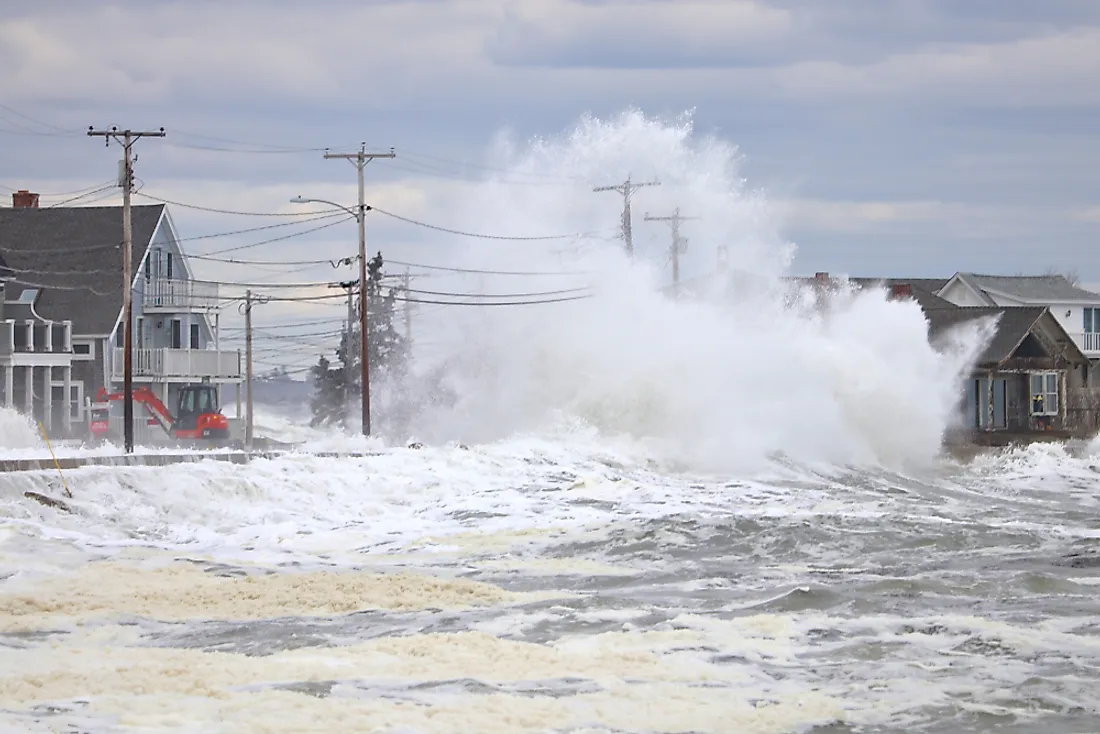What Is A Nor'easter?

A nor’easter, also known as northeaster, is a type of cyclone that occurs along the east coast of North America. The name is derived from the strong northeasterly wind that blows in from the ocean and hit the eastern seaboard of the northern hemisphere. In North America, the term “nor’easter” is used to refer to the storm that impacts Atlantic Canada and the New England in the US. Nor’easter is often accompanied by snow or rain and can lead to coastal flooding or erosion. It usually develops in the months of October and March but it can also develop, though not common, during other months of the year.
Formation
Nor’easter usually develops from the difference in the Gulf Stream ocean current originating from the Atlantic Ocean and the masses of cold air that originate from Canada. That is, it often develops in the latitude between Georgia and New Jersey, approximately 100 miles west of East Coast and progresses northwestwardly, attaining maximum intensity near the Atlantic provinces of Canada and New England. The cold air rushing southwards meets the warm Gulf Stream current that is mostly 21 degrees Celsius. In the top atmosphere, the rising air is removed and replaced faster than the Atlantic air is replaced by the strong wind of the jet stream, leading to the development of the strong storms. The storm moves northeasterly on the East Coast past the Atlantic provinces of Canada and the New England.
Characteristics
Nor’easter always brings precipitation in the form of snow and rain as well as a wind of gale force and rough sea that may lead to coastal flooding. The regions between Philadelphia, Washington DC, New York, and Boston are especially affected by the storm. The storms are mostly formed by the coming together of several other weaker storms.
As the nor’easter passes, the sun is often blocked out by thick, low-level, dark clouds. The temperature falls due to the effects of the cooler air from wind originating from the northeasterly direction. In the storm, the precipitation ranges from a torrential downpour to fine mists. Sometimes, the wind accompanying the storm is so strong that it is often mistaken for a hurricane. The only difference between a nor’easter and a hurricane is that hurricanes have narrow fields of strong winds that are concentrated at the center while nor’easter’s winds are normally spread out and center of the storm rarely take on the circular shape.
Examples of Nor’easters
Some of the popular nor’easters include the Great Blizzard of 1888 in the US which dropped over 40 inches of snow and killed 400 people mostly in New York. The Ash Wednesday Storm of March 1962 resulted in a severe tidal flooding and blizzard in the regions mid-Atlantic and New England, killing 40 people. The Great Appalachian Storm of November 1950 dropped more than 30 inches of snow along the eastern US, killing 353 people. Other nor’easters include Eastern Canadian Blizzard of March 1971 and the more recent July 2018 nor’easter.











